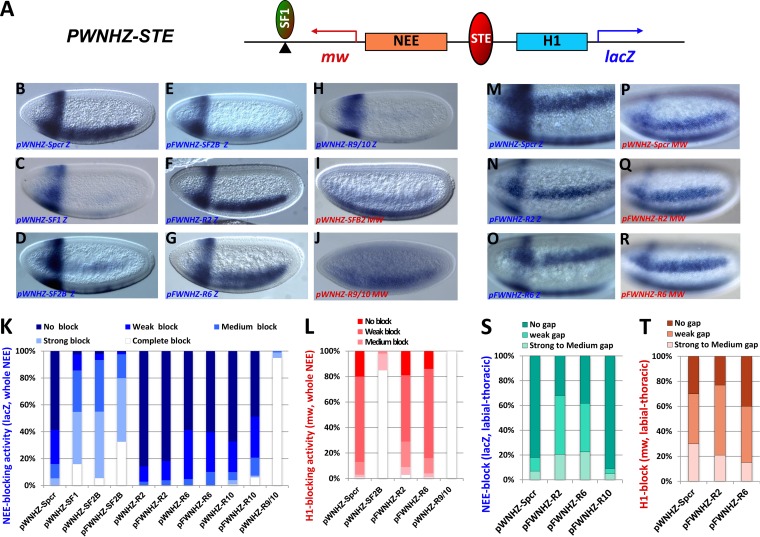FIG 6.
STEs exhibit diverse enhancer-blocking activity in transgenic Drosophila. (A) Diagram of the pWNHZ-STE transgene vector containing divergently transcribed lacZ (blue arrow) and miniwhite (mw; red arrow) reporters flanking the NEE and H1 enhancers (see Materials and Methods). Red oval, STEs or spacer control (Spcr) between NEE and H1; green oval, SF1 inserted in a subset of transgenes (pFWNHZ). (B to J) Representative images of transgenic embryos after whole-mount in situ hybridization with the anti-lacZ (B to H) or the antiwhite (I and J) RNA probes. Transgenes contained in these embryos are labeled at the bottom of each photo, with probes indicated (Z, lacZ; mw, miniwhite). Embryos are shown in sagittal views with anterior to the left and dorsal up. (K) Quantitation of NEE blocking in the whole neuroectoderm in transgenic embryos stained with the lacZ probe (see Materials and Methods for details). (L) Quantitation of H1 blocking in the head stripe in transgenic embryos stained with the miniwhite probe. (M to R) Representative images of embryos after whole-mount in situ hybridization with the anti-lacZ (M to O) or the antiwhite (P-R) RNA probes. Transgenes in these embryos are labeled at the bottom of the photo, with probes indicated. Anterior region of embryos are shown in ventral lateral views, anterior to the left and dorsal up. (S) Quantitation of NEE blocking in the labial thoracic tissues (gap) in embryos stained with the lacZ probe (see Materials and Methods for details). (T) Quantitation of the labial thoracic gap in embryos stained with the miniwhite probe.

